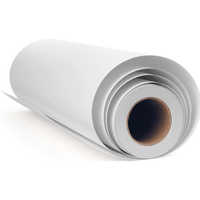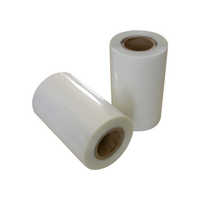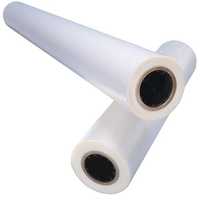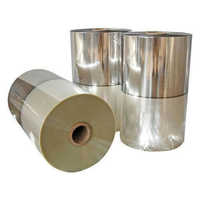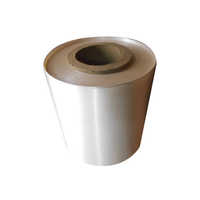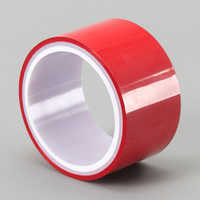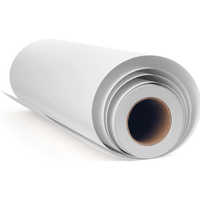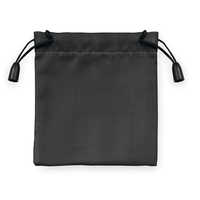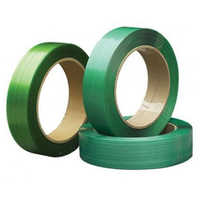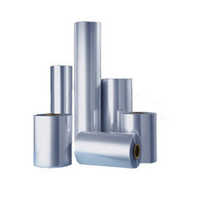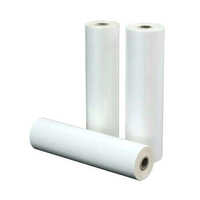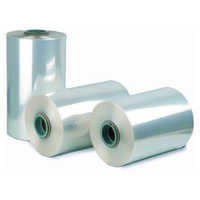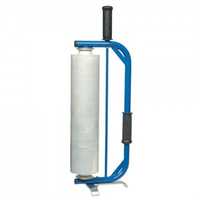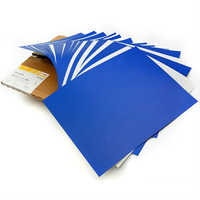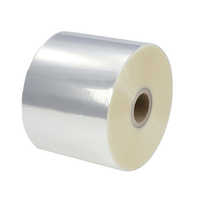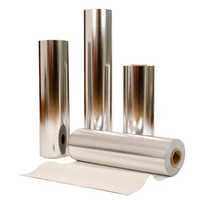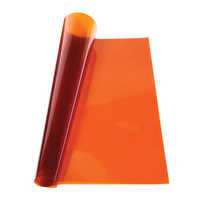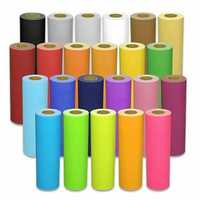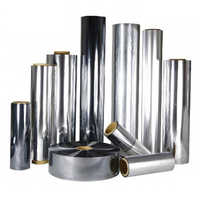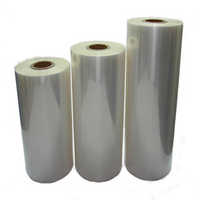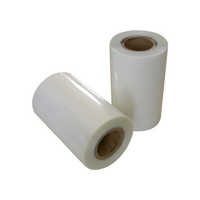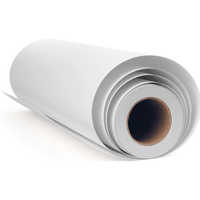Polyester Film
(1662 products)
Related Categories
Adhesive Tapes
Aerosols
Agricultural Films
Aluminium & Foils
BOPP Films
Biodegradable Products
Bottle Caps & Plastic Lids
Bottles
Cork & Cork Products
Corrugated Boxes
Craft Paper
Disposable Products
Drums & Barrels
Foam,Rexine & PU Products
Food Packaging Materials
Holograms & Holographic Films
Household Paper
Industrial & Speciality Paper
Industrial Tape
Labels, Stickers & Tags
Lamination Material
Metal Containers & Cans
Napkins
Nets
Non Woven Bags
PP & HDPE Sacks
Packaging & Printing Projects
Packaging Bags
Packaging Boxes
Packaging Clips
Packaging Films
Packaging Foil
Packaging Papers
Packaging Product Stocks
Packaging Products Agents
Packaging Tubes
Packing & Sealing Tapes
Pallets & Crates
Paper & Paper Made Products
Paper Bags
Paper Cone
Paper Cups, Plates & Food Trays
Paper Rolls
Photographic Paper
Plastic Bags
Plastic Boxes
Plastic Containers
Plastic Packaging Materials
Polyester Film
Printing & Writing Paper
Protective Packaging Materials
Sanitary Paper
Straps
Thermal Paper
Thermocol
Tin Containers
Warning Tapes
Woven Bags
Explore More Categories
Indian Inquiries Only
Verified Exporter
( Accepts only Foreign Inquiry)
Transparent Sdt Grade Siliconised Polyester Film Liner
Price: 90.00 - 200.00 INR (Approx.)/Kilograms
MOQ - 50 Kilograms/Kilograms
Material - Other
Type - Other
Feature - Offset Printing
9 Years
Business Type: Manufacturer | Distributor
ADISHA ENTERPRISES
Yellow Polyimide Sheet
Price: 500.00 - 3000.00 INR (Approx.)/Kilograms
MOQ - 1000 Kilograms/Kilograms
Material - Other, Polyimide
Hardness - Soft
Transparency - Transparent
15 Years
Business Type: Manufacturer | Distributor
GANAPATHY INDUSTRIES
Polyester Film Rolls Hardness: Soft
MOQ - 100 Kilograms/Kilograms
Material - Other, Polyester
Type - Other, Film Rolls
Processing - Multiple Extrusion
2 Years
Business Type: Supplier | Trading Company
Gold Plast
Indian Inquiries Only
Metallized Plastic Films
Price: 200.00 - 350.00 INR (Approx.)/Kilograms
MOQ - 1000 Kilograms/Kilograms
9 Years
Business Type: Manufacturer | Distributor
BASANT PAPER MART
Indian Inquiries Only
Blue Ldpe Shrink Film
Price: 120 INR (Approx.)/Kilograms
MOQ - 100 Kilograms/Kilograms
Material - PVC
Type - Shrink Label
Transparency - Transparent
Business Type: Manufacturer | Exporter
Maheshwari Overseas
Indian Inquiries Only
Transparent Polyolefin Shrink Films
Price: 280 INR (Approx.)/Kilograms
MOQ - 25 Kilograms/Kilograms
Material - Other
Type - Other
Color - Transparent
12 Years
Business Type: Manufacturer
GUJARAT MARKETING
Indian Inquiries Only
White 23 Micron Stretch Film
MOQ - 500 Kilograms/Kilograms,
Hardness - Soft
Color - White
14 Years
Business Type: Manufacturer | Exporter
TILAK POLYPACK PVT. LTD.
Cling Wraps Films
Price: 120.00 - 250.00 INR (Approx.)/Kilograms
MOQ - 1000 Kilograms/Kilograms
11 Years
Business Type: Manufacturer | Distributor
DHRUVRAJ SYNDICATE
Indian Inquiries Only
Polyimide Film Rolls
Price: 5000 INR (Approx.)/Kilograms
MOQ - 1 Kilograms/Kilograms
8 Years
Business Type: Distributor | Exporter
HARSH CORPORATION
White Thermal Bopp Matte Film
Price: 180.00 - 190.00 INR (Approx.)/Kilograms
MOQ - 100 Kilograms/Kilograms
Material - PVC
Type - Other, Bopp Matte
Hardness - Soft
12 Years
Business Type: Manufacturer | Distributor
S. K. ENTERPRISES
Indian Inquiries Only
Transparent Polyester Pet Film
Price: 150.00 - 400.00 INR (Approx.)/Kilograms
MOQ - 30 Kilograms/Kilograms
Material - Other, Polyester
Feature - Embossing
Hardness - Rigid
3 Years
Business Type: Distributor | Trading Company
RAJ TRADERS
Indian Inquiries Only
Transparent Holographic Vinyl Heat Transfer Film
Price: 2500 INR (Approx.)/Roll
MOQ - 50 Roll/Rolls
4 Years
Business Type: Supplier | Trading Company
SAKSHI IMPORT EXPORT
Indian Inquiries Only
Rainbow Multi Laser Film
Price: 220 INR (Approx.)/Kilograms
MOQ - 200 Kilograms/Kilograms
22 Years
Business Type: Manufacturer | Exporter
SPICK GLOBAL
Verified Exporter
( Accepts only Foreign Inquiry)
White Sck Release Liner
MOQ - 200 Kilograms/Kilograms
Color - white
6 Years
Business Type: Manufacturer | Exporter
KARANI PAPERS
Indian Inquiries Only
Milky Polyester Films
Price: 175 INR (Approx.)/Kilograms
MOQ - 50 Kilograms/Kilograms
12 Years
Business Type: Manufacturer | Exporter
ACCURATE INDUSTRIAL PRODUCTS
Plain Golden Polyester Film Size: 12 Micron
Price: 150 INR (Approx.)/Kilograms
MOQ - 100 Kilograms/Kilograms
Material - Other, Polyester
Type - Other, Film
Transparency - Opaque
3 Years
Business Type: Manufacturer | Trading Company
ROYAL PRIME SALES
Metallised Glitter Films
Price: 1 INR (Approx.)/Kilograms
MOQ - 250 Kilograms/Kilograms
16 Years
Business Type: Manufacturer | Distributor
KAVERI METALLISING & COATING INDUSTRIES PVT. LTD.
Embossing High Performance Fluoropolymer Film
Price: 100 INR (Approx.)/Square Foot
MOQ - 100 Square Foot/Square Foots
Material - Other
Feature - Embossing
Hardness - Rigid
3 Years
Business Type: Manufacturer
GUARNIFLON INDIA PVT. LTD.
METALLISED POLYESTER CHEMICAL COATED
Price: 115.00 - 160.00 INR (Approx.)/Kilograms
MOQ - 200 Kilograms/Kilograms
Material - Non-Woven
Type - Other
Color - WHITE
9 Years
Business Type: Manufacturer | Distributor
STAR FLEXI FILMS
Embossing Plain Polyester Film
Price: 190 INR (Approx.)/Kilograms
MOQ - 100 Kilograms/Kilograms
Material - PVC
Processing - Multiple Extrusion
Feature - Embossing
Business Type: Manufacturer | Supplier
SINGHLA STATIONERY PRODUCTS
Transparent 400 Meter X 30 Cm 25 Micron Thick Plain Polyester Film Roll
Price: 59 INR (Approx.)/Kilograms
MOQ - 2500 Kilograms/Kilograms
Material - Other, Polyester
Feature - Embossing
Hardness - Soft
3 Years
Business Type: Manufacturer | Service Provider
KRISHNA AGRO SOLUTIONS
Indian Inquiries Only
Pet Printed Metallized Polyester Film
Price: 295.00 INR (Approx.)/Kilograms
MOQ - 500 Kilograms/Kilograms
Material - PET
Feature - Gravure Printing
2 Years
Business Type: Manufacturer | Supplier
S.A. BLESSING GRAVURE PRINTING WORKS.
Indian Inquiries Only
Embossing Packaging Polyester Film
Price: 165 INR (Approx.)/Kilograms
MOQ - 100 Kilograms/Kilograms
Material - PP
Processing - Multiple Extrusion
Feature - Embossing
1 Years
Business Type: Trading Company
A. V. POLYFILMS
Matte Finish Coloured Polyester Film
Price: 165.00 - 265.00 INR (Approx.)/Gram
MOQ - 250 Gram/Grams
10 Years
Business Type: Trading Company
PARAG ENTERPRISES
Polyester Film Manufacturers | Suppliers in India
| Company Name | Location | Member Since |
|---|---|---|
| Spick Global | New Delhi, India | 22 Years |
| Kaveri Metallising & Coating Industries Pvt. Ltd. | Gandhinagar, India | 16 Years |
| Ganapathy Industries | Bengaluru, India | 15 Years |
| Tilak Polypack Pvt. Ltd. | Ahmedabad, India | 14 Years |
| Gujarat Marketing | Ahmedabad, India | 12 Years |
| S. K. Enterprises | Delhi, India | 12 Years |
| Accurate Industrial Products | Vadodara, India | 12 Years |
| Dhruvraj Syndicate | Ahmedabad, India | 11 Years |
| Parag Enterprises | Delhi, India | 10 Years |
| Adisha Enterprises | Mumbai, India | 9 Years |
What is a Polyester Film?
What are the Uses & Benefits of the Polyester Film?
How Many Types of Polyester Film?
Things to Consider Before Selecting a Polyester Film
FAQs: Polyester Film
Related Categories
Related Categories
Adhesive Tapes
Aerosols
Agricultural Films
Aluminium & Foils
BOPP Films
Biodegradable Products
Bottle Caps & Plastic Lids
Bottles
Cork & Cork Products
Corrugated Boxes
Craft Paper
Disposable Products
Drums & Barrels
Foam,Rexine & PU Products
Food Packaging Materials
Holograms & Holographic Films
Household Paper
Industrial & Speciality Paper
Industrial Tape
Labels, Stickers & Tags
Lamination Material
Metal Containers & Cans
Napkins
Nets
Non Woven Bags
PP & HDPE Sacks
Packaging & Printing Projects
Packaging Bags
Packaging Boxes
Packaging Clips
Packaging Films
Packaging Foil
Packaging Papers
Packaging Product Stocks
Packaging Products Agents
Packaging Tubes
Packing & Sealing Tapes
Pallets & Crates
Paper & Paper Made Products
Paper Bags
Paper Cone
Paper Cups, Plates & Food Trays
Paper Rolls
Photographic Paper
Plastic Bags
Plastic Boxes
Plastic Containers
Plastic Packaging Materials
Polyester Film
Printing & Writing Paper
Protective Packaging Materials
Sanitary Paper
Straps
Thermal Paper
Thermocol
Tin Containers
Warning Tapes
Woven Bags
